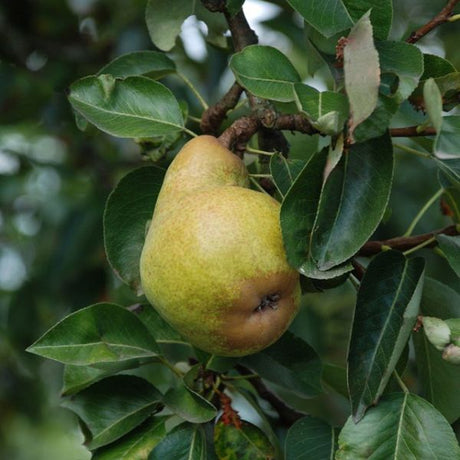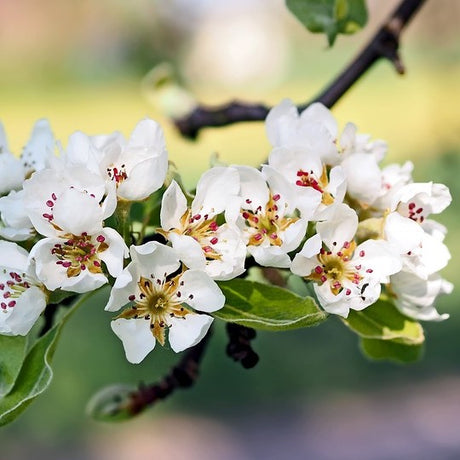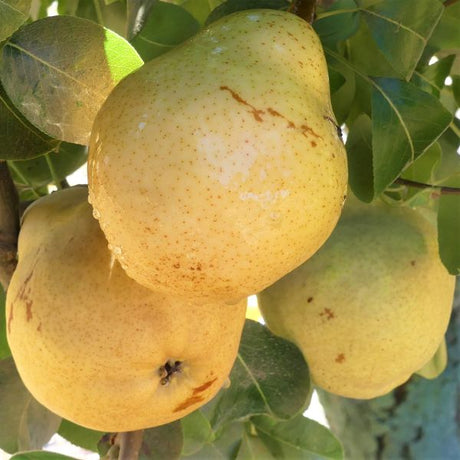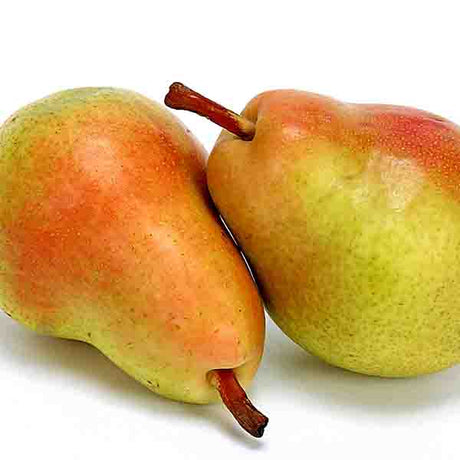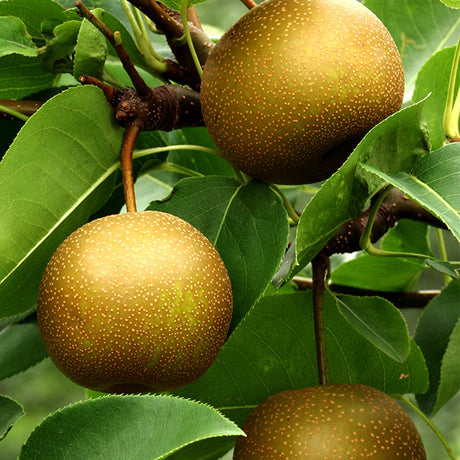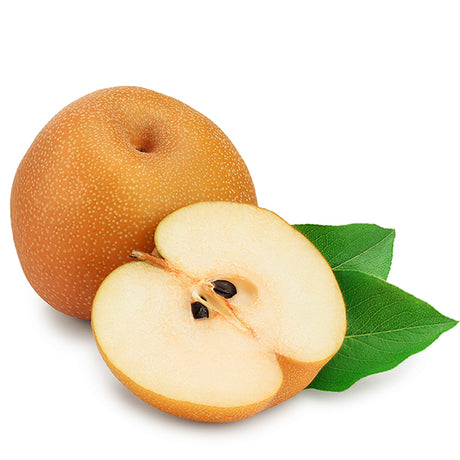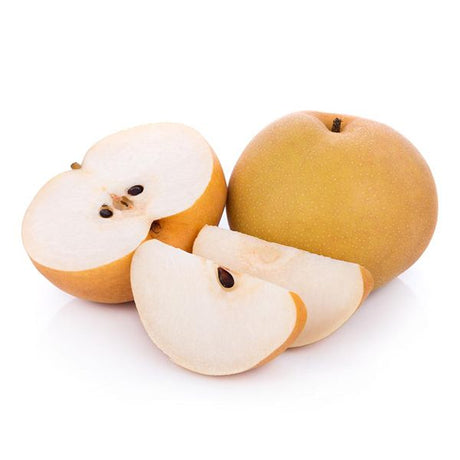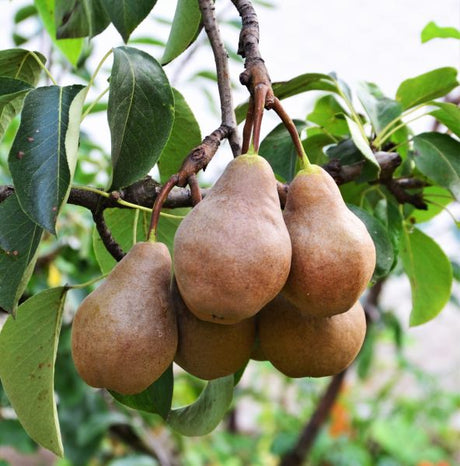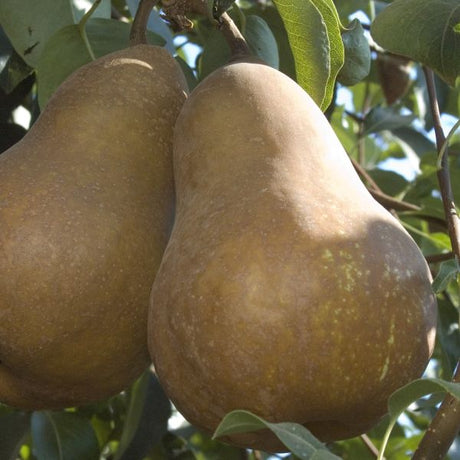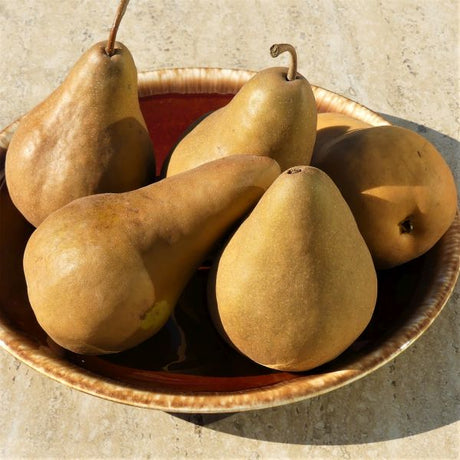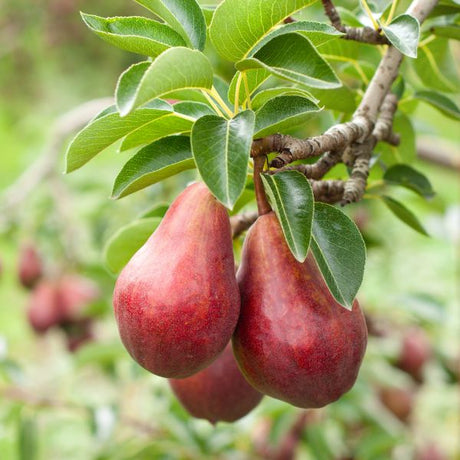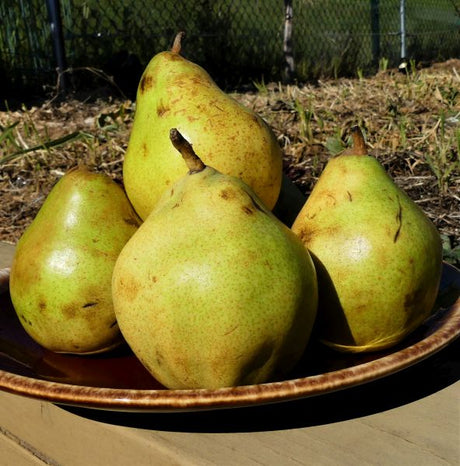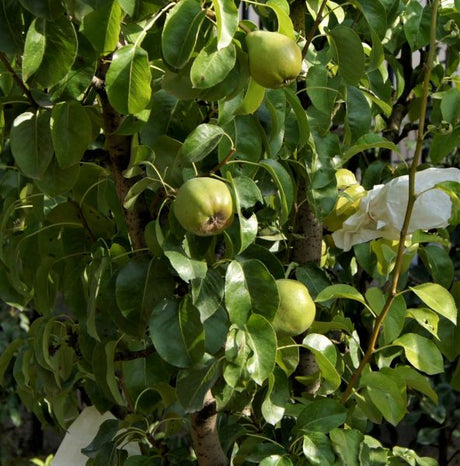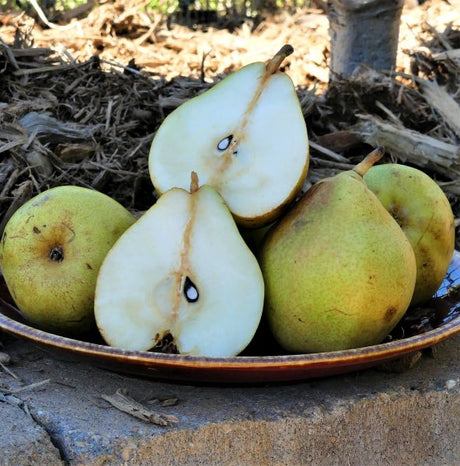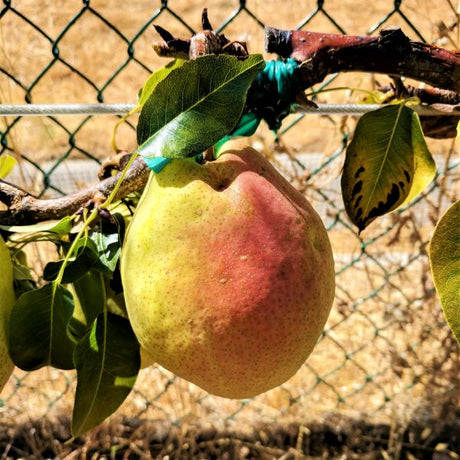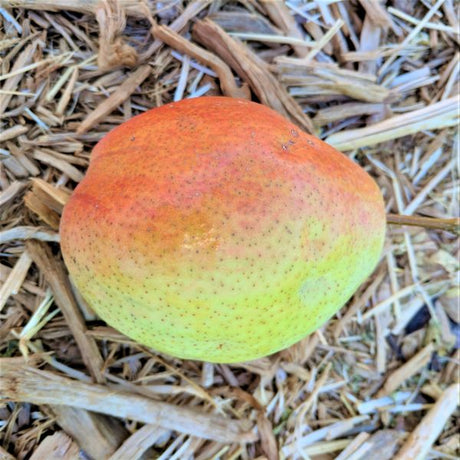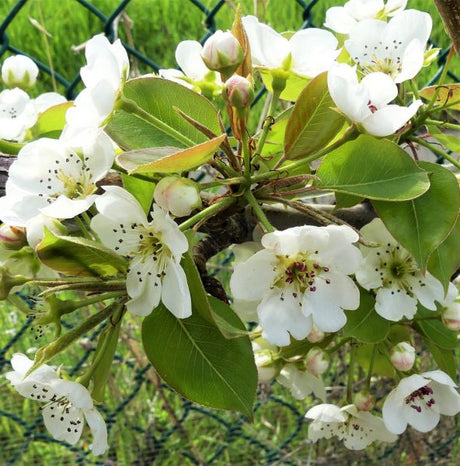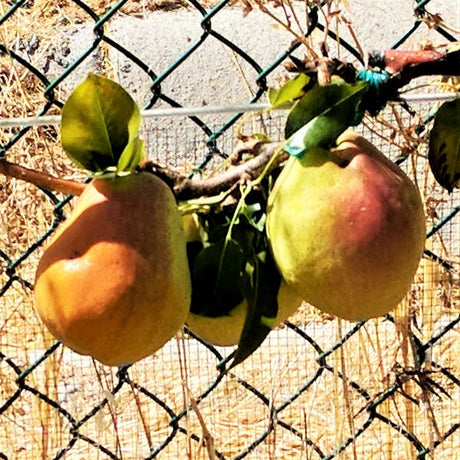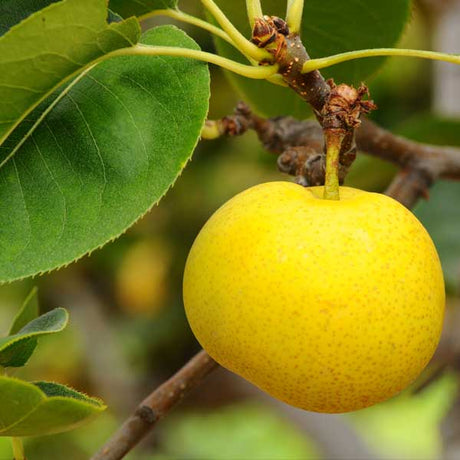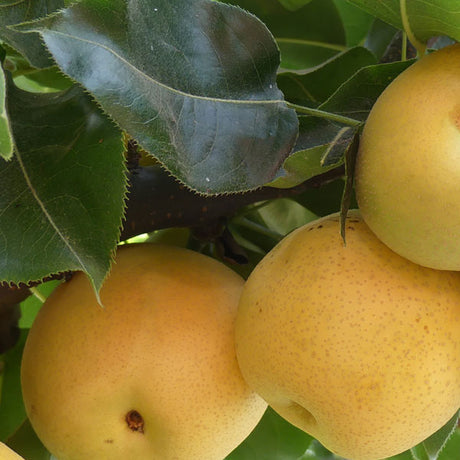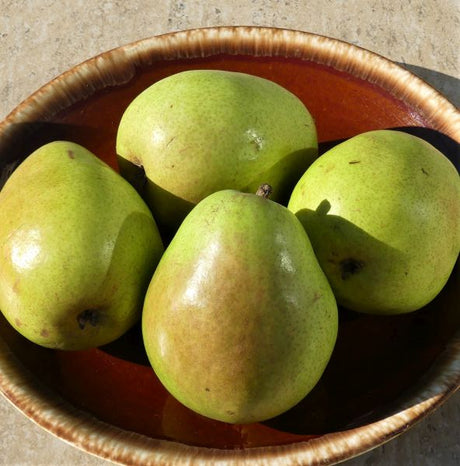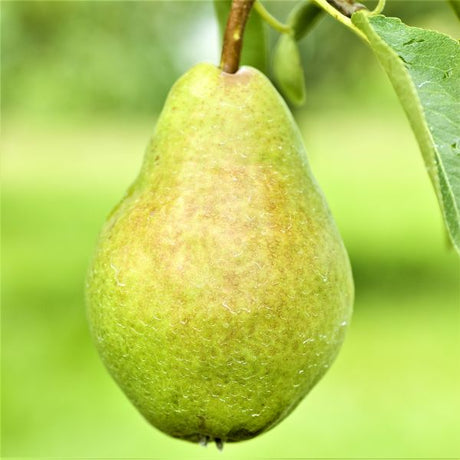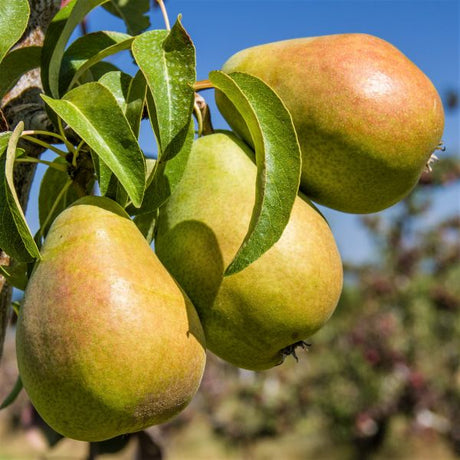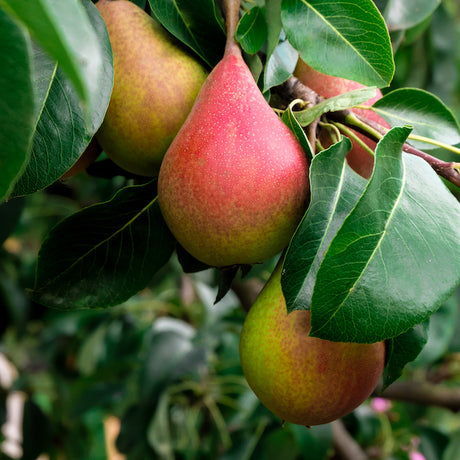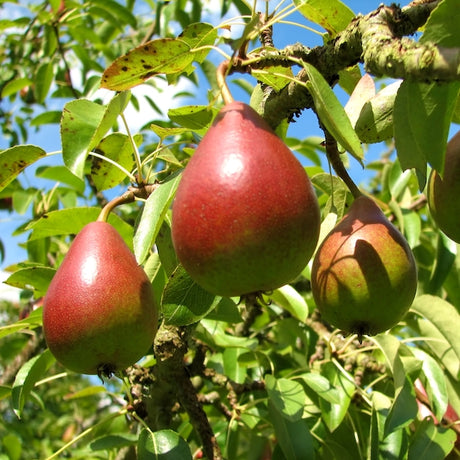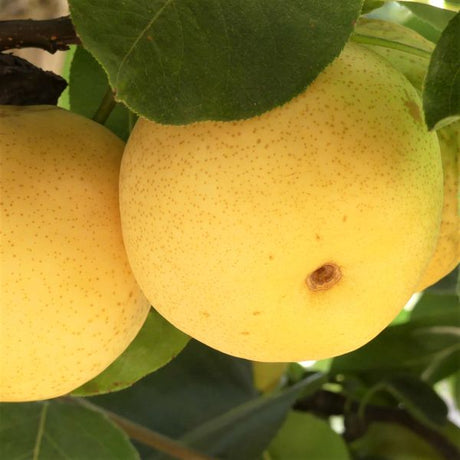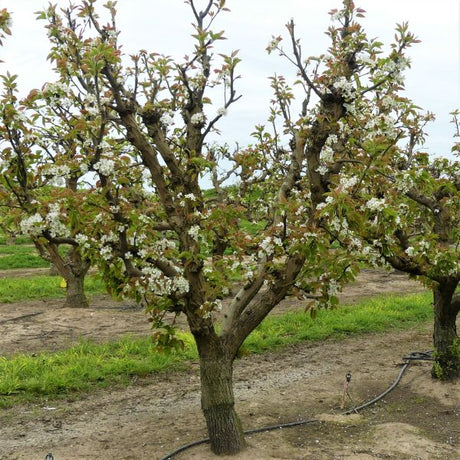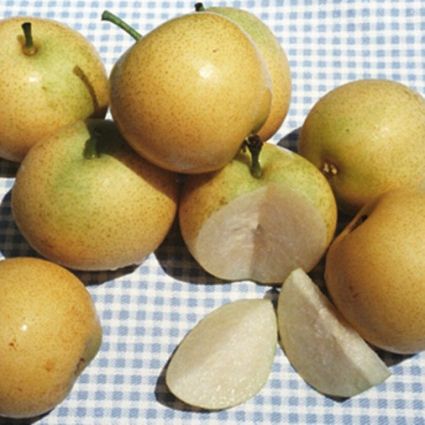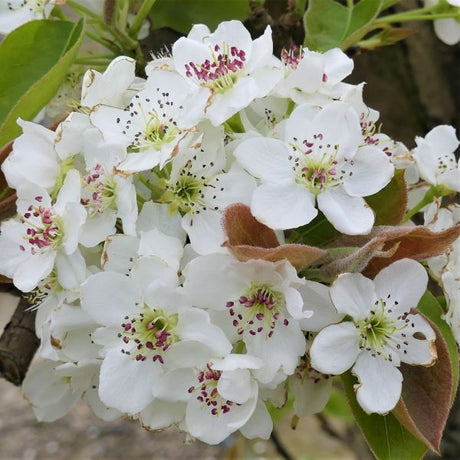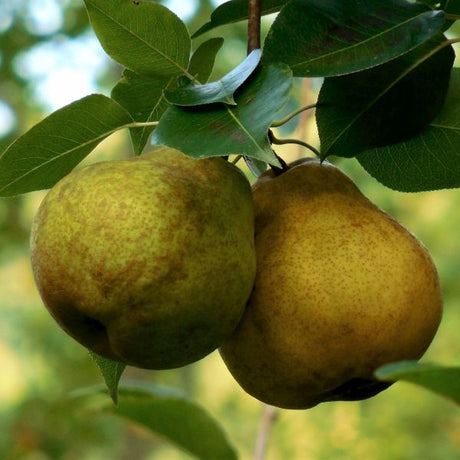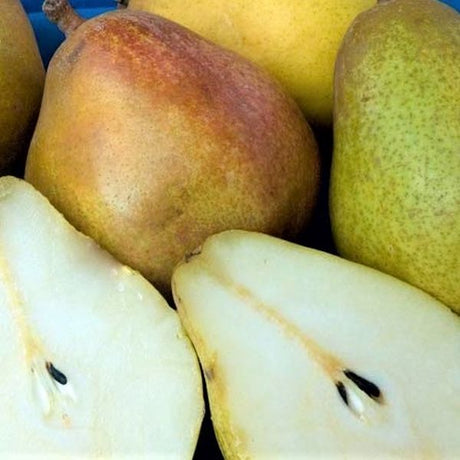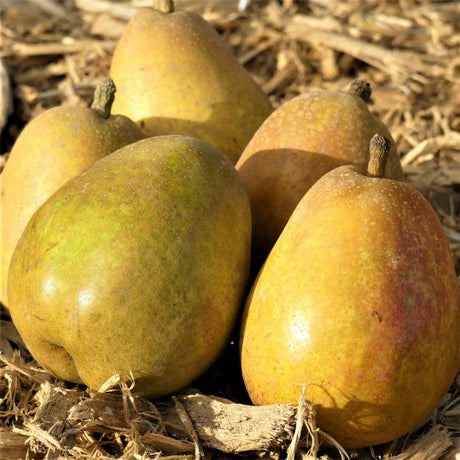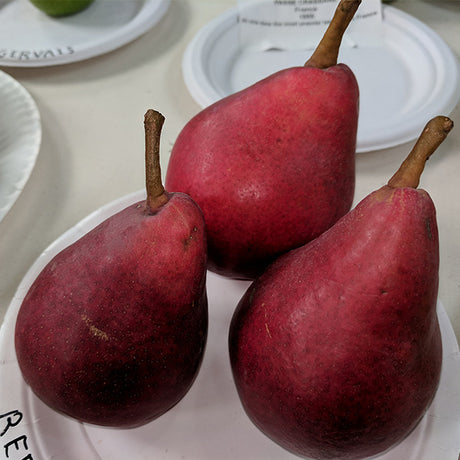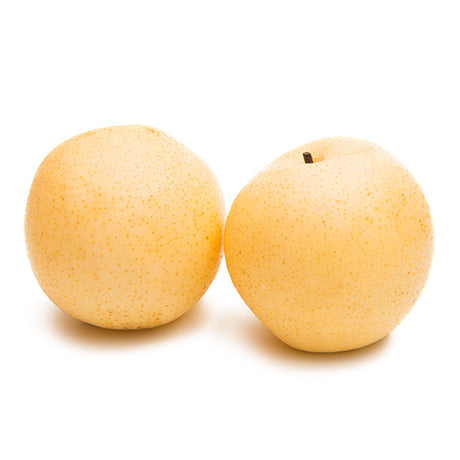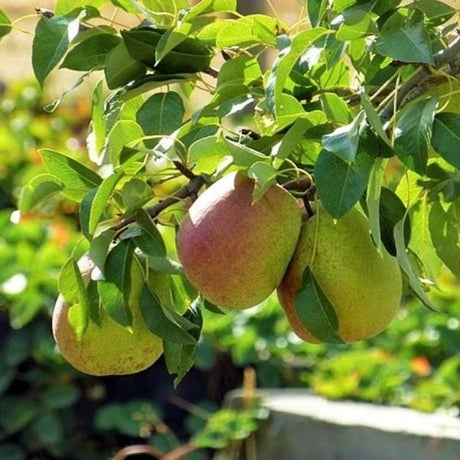- Sold out
Clapp's Favorite European Pear Tree
Pyrus communis 'Clapp's Favorite'
Regular price $7163Unit price /Unavailable- Sold out
- Sold out
- Sold out
- Sold out
- Sold outUp to 8% off
Pyrus pyrifolia 'Nijisseiki'
Regular price From $12994Unit price /Unavailable Pyrus 'D'Anjou'
Sale price From $14223 Regular price $16509Unit price /Unavailable- Sold out
Pyrus 'Southern Barlett'
Regular price From $16973Unit price /Unavailable - Sold out
- Sold out
- Sold out
Sensation Red Bartlett Pear Tree
Pyrus communis 'Sensation'
Regular price $14969Unit price /Unavailable
Pear Trees for Sale at Nature Hills Nursery

Since the days of the Roman Empire, Pear Trees have been beloved for their sweet, juicy fruit. Today, there are more than 1,500 types of Pear Trees grown worldwide, and you’ll find some of the very best for sale right here at Nature Hills Nursery.
Wild Pears (Pyrus) were first cultivated in Europe and Asia, where ancient farmers bred larger, sweeter fruit from parent plants. Over centuries, these efforts produced treasured cultivars that remain popular to this day.
Romans grew around 50 improved varieties, and by 1860, horticulturist T.W. Fields recorded over 850 types. Today, Pears continue to be a timeless favorite, perfect for fresh snacking, baking, and outdoor gatherings.
Nature Hills Nursery offers orchard-grade Pear Trees shipped across the continental U.S. Whether you’re looking for crisp Asian Pears or gourmet European Pear varieties, we’ve got you covered.
- The Difference Between European and Asian Pears
- Pollination and Bloom Times
- Asian Pears: Large, Round, Juicy "Water Apples"
- Top Asian Pear Varieties at Nature Hills
- European Pear Varieties for Home Orchards
- Caring for Your Pear Tree
- Pear Trees: Healthy, Delicious, and Homegrown
The Difference Between European and Asian Pears

Pear Trees are among the easiest fruit trees to grow, and they generally fall into two main categories:
- European Pears feature the classic narrow neck and produce soft, juicy fruit with complex flavor.
- Asian Pears are round like Apples, with crisp, crunchy flesh and loads of refreshing juice.
Harvesting and ripening methods differ between the two types, making them versatile for fresh eating, preserving, or cooking.
Pollination and Bloom Times
A healthy Pear Tree can thrive for up to 100 years. While some are self-pollinating, pairing them with a compatible partner greatly increases yields.
- Plant two Asian Pears or two European Pears for best results.
- Asian Pears bloom earlier than European types.
- Asian and European Pears rarely cross-pollinate unless bloom times overlap.
- Some varieties, like the Bartlett Pear, are self-pollinating but still benefit from a companion.
Asian Pears: Large, Round, Juicy "Water Apples"

Asian Pears, also called Apple Pears, produce crisp fruit with a refreshing crunch. Many grow quite large, so thinning your tree ensures higher-quality harvests.
Pick when the skin turns golden russet and the fruit pulls easily from the branch. These Pears are delicious fresh, in marinades, or as a healthy snack. In Asia, they’re often exchanged as cherished gifts.
Top Asian Pear Varieties at Nature Hills
- Hosui Pears – famous for rich, juicy flavor
- Shinseiki Pears – reliable, heavy-bearing, and delicious
- Chojuro Pears – crisp with hints of butterscotch
Whichever variety you choose, order early! Availability is limited! These trees also deliver clouds of white blooms in spring and vibrant fall foliage.
European Pear Varieties for Home Orchards
European Pears are prized for their rich flavor and versatility. Popular options include:
- Comice Pears – a gourmet favorite for holiday gift baskets
- D’Anjou Pears – great for baking, canning, and fresh eating
- Seckel Pears – tiny, sugary-sweet Pears perfect for preserving
Harvest European Pears while firm and let them ripen indoors to maintain perfect texture and flavor.
Caring For Your Pear Tree

Pear Trees establish quickly and often produce fruit within three to five years. For a faster harvest, start with the largest container size available.
- Plant in full sun with plenty of air circulation.
- Choose well-drained soil or plant in raised beds/mounds.
- Dig planting holes twice as wide as the root ball but no deeper.
- Soak roots before planting, backfill firmly, and water deeply (Finger Test watering guide).
- Mulch 2–3 inches deep, keeping it clear of the trunk.
- Prune annually and use a balanced fruit tree fertilizer (fruit tree pruning tips).
Pear Trees also make excellent espalier plants, ideal for compact spaces.
Pear Trees: Healthy, Delicious, and Homegrown
Pears are rich in fiber, potassium, and calcium, yet low in calories, fat, and cholesterol. They’re an excellent addition to a healthy lifestyle.
Enjoy Pears fresh, grilled, baked, or canned. They’re perfect for baby food, preserves, and even homemade fruit leather.
Plant a pair of Pear Trees in your garden for years of beauty and bountiful harvests. Our trees sell quickly, so order today to secure your preferred variety for seasonal shipping in your region.
Shop the full collection of Pear Trees for sale at Nature Hills Nursery and bring the best of homegrown fruit to your landscape.
FAQ's for Buying Pear Trees Online
What is the difference between European and Asian Pear trees?
What is the difference between European and Asian Pear trees?
European Pear trees produce fruit with a classic teardrop shape, soft texture, and rich, complex flavor. Asian Pear trees are round like Apples, with firm, crisp flesh and a juicy snap when you bite into them. Both are delicious but require different harvesting and storage techniques. Asian Pears ripen on the tree and are ready to eat right away, while European Pears need to be picked when firm and ripened indoors.
Do I need two Pear trees to get fruit?
Do I need two Pear trees to get fruit?
Some Pear trees, like the Bartlett Pear, are self-pollinating, but most varieties will produce a better harvest when paired with another compatible tree that blooms at the same time. European Pears typically need another European variety for pollination, while Asian Pears require a different Asian Pear cultivar nearby to ensure a full crop. Planting two trees that bloom together means more Pears for you to enjoy.
How long does it take a Pear tree to start producing fruit?
How long does it take a Pear tree to start producing fruit?
Pear trees from Nature Hills Nursery are usually ready to fruit within three to five years after planting. Choose a larger tree from our available container sizes for a head start on harvest. With proper planting, pruning, and care, your Pear tree will reward you with healthy fruit and beautiful spring blossoms year after year.
What are the best Pear tree varieties for home gardens?
What are the best Pear tree varieties for home gardens?
Some of the best Pear trees for home gardens include Hosui and Shinseiki for Asian Pears, which offer crisp texture and sweet flavor, and Comice and D’Anjou for European types, known for their silky bite and gourmet appeal. Seckel Pears are a favorite for canning, and Bartlett remains a popular all-around choice. Choose your variety based on flavor, harvest timing, and whether you prefer fresh eating or preserving.
How should I care for my Pear tree after planting?
How should I care for my Pear tree after planting?
Plant Pear trees in full sun with well-drained soil. Water deeply after planting to eliminate air pockets and mulch around the base to retain moisture. Avoid letting mulch touch the trunk. Prune annually to shape the tree and encourage airflow, and fertilize with a fruit tree-specific formula. Use Nature Hills Root Booster at planting to encourage strong root growth and long-term tree health.

